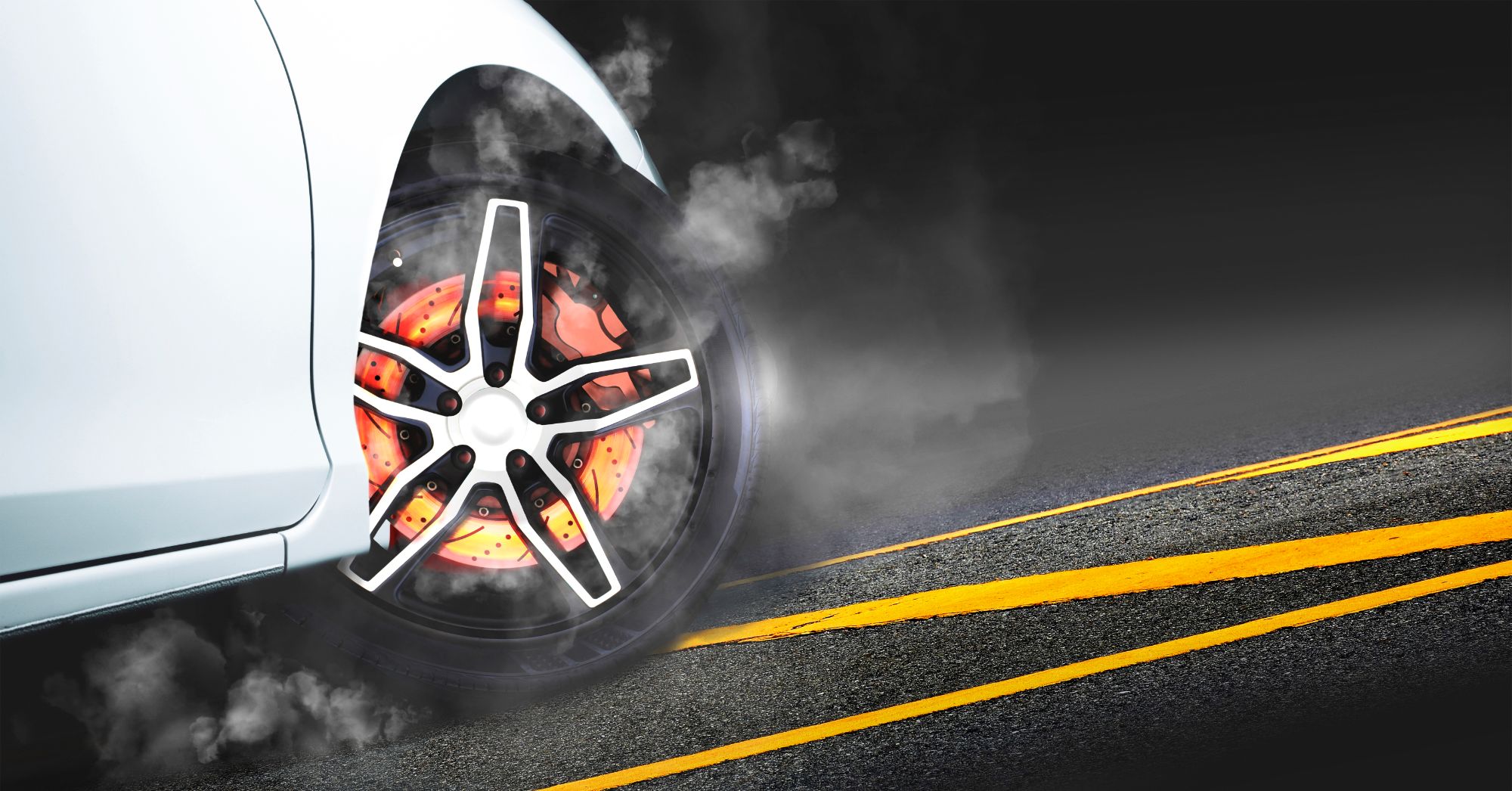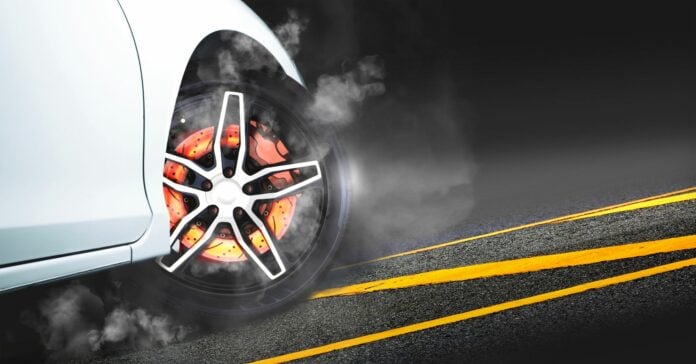At some point or another, every car owner’s probably endured that ear-shrieking sound from their brakes that’s reminiscent of fingernails scraping across a blackboard. The intensity varies but one cardinal rule to follow is that the signature squealing noise from the brakes can indicate larger problems beyond the horizon and should be addressed immediately.
Your car’s brakes are probably the singular most important system because while your car not being able to move is infuriating at best, not being able to stop is probably lethal.
The only bright side from your brakes squealing is its function as a siren pointing towards potential problems brewing.

What Causes the Squealing Sound from Your Brakes?
While it might seem pretty obvious that friction is the offender, that’s also the principle behind your brakes’ intended function of safely bringing you to a halt. Nonetheless, noisy brakes shouldn’t occur if everything is functioning satisfactorily.
The simplest reason, however, and one that usually disappears after a few minutes of driving, is light surface rust. This can be attributed to moisture on the surface of the brake rotors forming a layer of rust.
Read More: Malfunctions in Car Safety Features and How to Check Them
If you paid attention during science lessons back in school instead of lusting over the cars you’ll have in your dream garage, you’ll recall that water and oxygen can cause rust on iron. And what is the most common material used in the production of brake rotors? That’s right, iron.
This is pretty common after heavy rain or if you’ve just washed your car as water droplets will stick to the rotor’s surface. However, seeing that it’s just minor surface rust, the squealing will disappear after some driving as the friction from the brake pads removes the rust.
Yes, it can be that simple but luck isn’t always on our side.
If you notice that the squealing noise from the brakes is constant, it’s probably time to have a qualified mechanic have a look at things. This could be a sign that some brake components are beginning to reach the end of their lifespan or fail.
Your brake pads are designed to emit a squealing sound as the pad material runs out and the wear indicator comes in contact with the rotors. That’s intentional, however, and meant to remind you to get your brake pads replaced.
Seeing that frictional force is the basis of your brakes’ functioning, it shouldn’t come as a surprise that wear and tear is a given with the components. Similarly, to the brake pads, the brake rotors also wear down over time.

Brake rotors have a minimum thickness for safe operation. You’ll be able to find the digits engraved on the cross-section side. Using a simple caliper, the mechanic will be able to determine if the rotors need to be replaced. Once the rotor has gone below the minimum thickness, you must replace them.
Skimping on rotors, pads, or brake shoes is a definite no-no. You can probably prolong the service interval between other components but never the brakes as these are the direct parts responsible for slowing your car down.
Something to keep in mind is that replacing your brake pads doesn’t necessitate replacing the brake rotors but if you replace your brake rotors, always replace the brake pads at the same time.
Read More: Proper and Safe Driving Attire
Wrong Selection of Brake Components
Some of you enthusiastic drivers might wrongfully be under the impression that the most performance-oriented brake pads are always the best bet. That would be true… if you were driving in the highest level of touring car racing.
If you’re not – and zooming up Genting Highlands doesn’t count, you’re better off with an entry-level set of brake pads that’s a step up from the regular ones.
The issue with high-performance brake pads is the higher temperature threshold required for them to function safely with constant hard braking that will see things getting more than a little toasty behind the wheels.
Anyone that runs high-performance brake components will preach that squealing is a given at cold temperatures or low speeds. The reason behind this is the brake pads work best within that temperature window. Low speeds keep it cold and outside that optimal performance window, causing the squealing noise.
Porsche has even produced a video regarding the squealing noise from its high-performance brakes to help customers and motorists, in general, understand why it happens.
https://www.youtube.com/watch?v=fUNHb9O52WQ
If you don’t participate in spirited driving, the best bet is to retain the same factory-spec brake pads that the car came with initially. Those operate in a lower temperature window that is suited for daily driving and the lower speeds we see in urban motoring.
Being within its lower temperature window ensures there’s no squealing and that the brake pad bites well in cold conditions without requiring a little driving to warm up.
Lastly, never forget to bleed and replace the brake fluid according to the recommended service interval as well. Brake fluid can get oxidized over time. This leads to moisture and other contaminants building up in the fluid. The side effect of this would be a spongy brake pedal feel. If your brake fluid is discolored, it’s time to get it replaced.
Read More: What to Do during a Tire Blowout and How to Avoid Crashing?
Properly Running in Your New Brake Components
Remember when we recommended replacing the brake pads if you’re getting a new set of brake rotors as well? That’s just one part of the process. New brake components also require running-in for a short period of time to properly bond the rotor surface with the brake pad.
Overlooking the running-in period or not adhering to it will cause squealing.
Ignorance of this cardinal step can lead to the brake pads wearing out unevenly as it doesn’t sit flat against the rotor’s surface. We’re pretty sure you can guess the side effects of this, squealing noise and in a worst-case scenario, vibrations.

How Do I Run In My New Brake Components?
Most experts recommend the slow and steady approach. This more civilized technique requires you to drive as you would normally and refrain from extremely hard braking for the first 500 kilometers or so. Of course, if there’s an emergency, please apply the brakes hard but if you can, avoid it for that duration.
During this first 500 kilometers, the brake pads will slowly shape themselves against the rotor surface and sit perfectly. This allows the brake pad compound to apply itself onto the rotor surface. This soft approach to breaking in would suffice if you only use your car for daily commutes.
Conclusion
All vehicles come with a recommended service interval for your brake components, just like it does for all other wear-and-tear parts. Keep to it and you should be perfectly safe.
However, bear in mind that while you can drive an extra 100 kilometers past your engine oil’s service interval, you shouldn’t with your brakes. Engine failure can be rectified but if your brakes fail, let’s just say there might not be anything left to repair.
Remember, it’s not an issue if you can’t get moving but it’s definitely a problem if you can’t stop.
If you’re shopping for a pre-owned car and are concerned about its safety, check out CARSOME’s offering. We prioritize safety and put all our cars through a 175-point inspection to rule out major accidents and flood damage. Furthermore, we professionally refurbish all CARSOME Certified cars while ensuring the condition of each component, including the brake pads exceed global safety standards.
We do all this to give you the utmost peace of mind when you drive our car.
Visit CARSOME today or download our app from the Google Play Store or Apple App Store!
